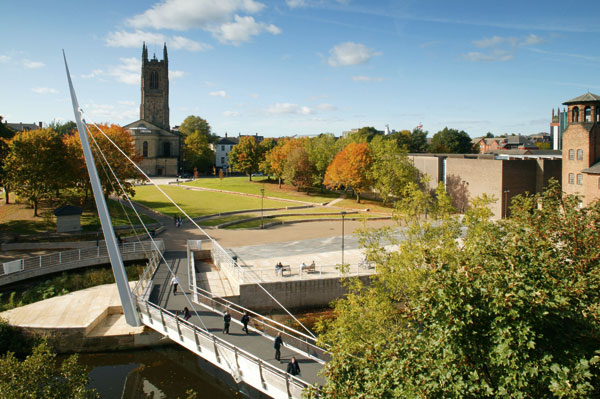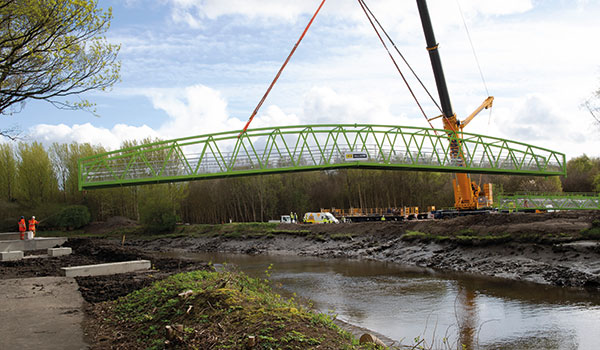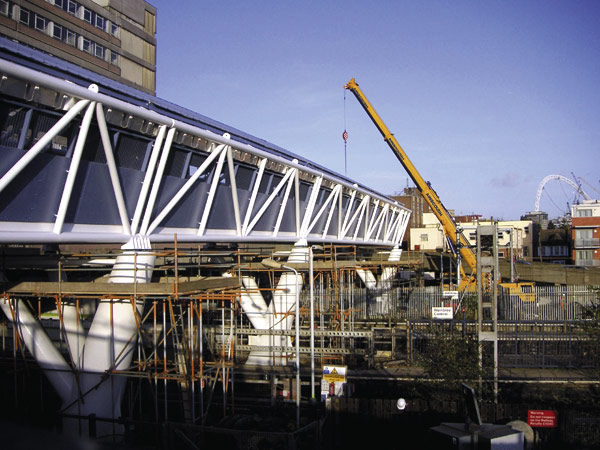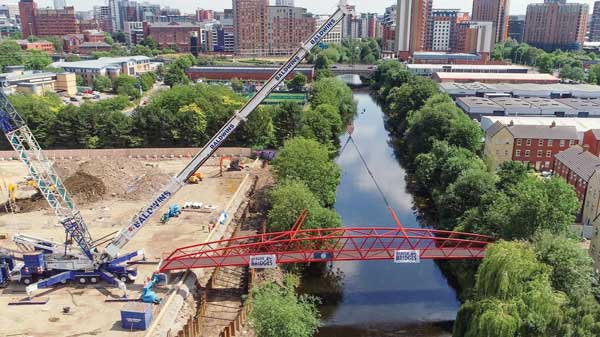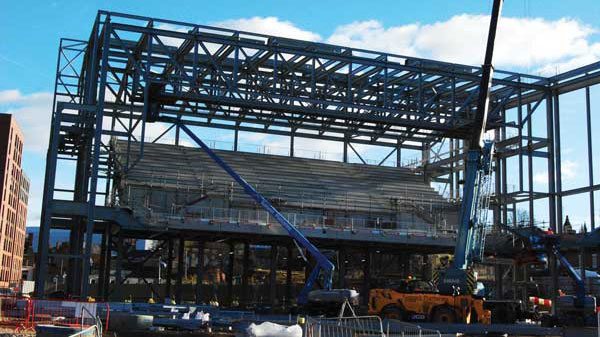SSDA Awards
SSDA 2010 – Cathedral Bridge, Derby
Addressing such issues as heritage, access and the environment, the Cathedral Bridge links two important Derby city centre areas forming part of a larger masterplan aimed at improving pedestrian routes.
FACT FILE: Cathedral Bridge, Derby
Structural engineer: Ramboll
Steelwork contractor: Briton Fabricators Ltd
Main contractor: Dean & Dyball
Client: Derby City Council
The Cathedral cable stayed pedestrian swing bridge forms an important element within a masterplan which will reinvigorate Derby’s historic city centre, while also improving access routes around the Silk Mill Museum and Derwent River.
The area has World Heritage status as the birthplace of the factory system where water power was first harnessed for textile production.
The bridge, which lynchpins these two agendas both metaphorically and literally, also had to respond to the site constraints associated with a low banked, fast flowing river that can rise quickly by up to 1m. It provides a flexible structure low enough to integrate well with the floodplain environment, swift enough in its mechanics to respond to water fluctuation; while its sharp steel profile evokes associations with the tools – scissor and needle – used in textile manufacture.
The structure spans both the River Derwent and the adjacent Mill Race waterway, which once powered a nearby textile mill. The bridge’s kinked backspan links across the Mill Race while also contributing structural efficiencies since it counterbalances the main deck which spans the Derwent. The 20m high needle-like mast is connected to the hollow box steel section of the deck via three pre-stressed steel cables.
“We worked closely with the steel fabricator from the early stages of design to ensure a highly efficient, integrated steel solution,” says Stephen Wilson, Ramboll Project Engineer.
“Feasibility analysis took prominence in early design phases since this complex bridge had to be tuned to function under variable loading conditions both in its open and closed positions, as well as in its transitional mode.”
During transition the bridge rotates about a vertical axis on a pivot bearing located under the mast. The tail end bearing is supported along a concealed track concentric to the pivot point and a massive cast steel roller mechanism concealed beneath the elbow of the bridge deck provides continual vertical support.
The nose end of the bridge is entirely unsupported during transition. “We calculated projected deflection values to within a hair’s breadth, pre-cambering the structure – which was fabricated in sections and welded together onsite – for efficiency of construction,” adds Mr Wilson.
The key sustainability contribution of the design is the near-effortless mechanical solution. The kinked blade of the deck is perfectly balanced to rotate using minimal energy. Keeping the structure as lean as possible reduced the use of materials, all of which were sourced and fabricated within 15 miles of site.
Ecological sensitivity played a key role, with the project’s minimal riverside intervention, which helped protect the local inter-tidal habitat. The design is future-proofed to accommodate potential future rises in water levels, as defined by current Environment Agency recommendations. Analysing the structure to achieve the slimmest possible steel deck depth meant Ramboll was able to calculate a generous tolerance for floodwater rise.







